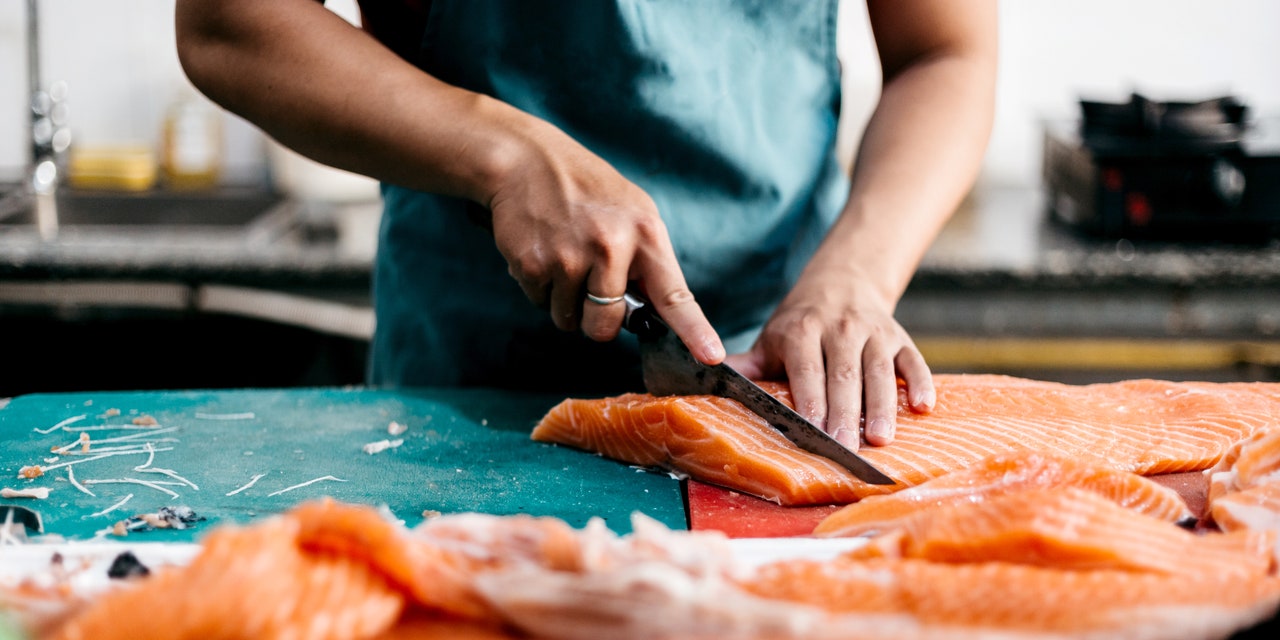[ad_1]
If you’d asked me last week, I probably would have guessed that corner-cutting chefs and contaminated produce were the main causes of foodborne illnesses coming out of US restaurants. But I would have been wrong: According to a new Centers for Disease Control and Prevention (CDC) report, the biggest known reason people get sick after eating at food joints is that restaurant workers show up to the job while they’re ill.
For the study, researchers analyzed 800 foodborne illness outbreaks reported by 25 state and local health departments between 2017 and 2019. About 500 cases had at least one contributing factor identified, and 205 of those cases (41%) likely involved sick staff handling food.
In 555 of the 800 cases, investigators narrowed down the infectious substances to salmonella (about 19%) and norovirus (47%) as either a confirmed or suspected factor. The contagious illness spurred by salmonella bacteria, salmonellosis, is usually caused by eating raw or undercooked meat, poultry, or egg products, the Mayo Clinic notes. Norovirus, which often leads to a nasty stomach flu, is easily spread from person to person, and sometimes via food directly. About 18% of outbreaks in the study were chalked up to contaminated raw food items and 14% were the result of ingredient cross-contamination.
As a diner, it’s easy to think the obvious solution is that restaurant workers should stop clocking in when they’re ill. But it’s not quite that simple for most people. Insight from the study authors, opinions of independent experts, and current Twitter discourse are, in a rare turn of events, seemingly aligned: An expansion of paid sick leave at restaurants is essential to keep ill workers from, well, working. But fewer than half of the restaurant managers (44%) surveyed by the CDC offered paid sick leave for their employees, which means staff have to grapple with the choice between earning a paycheck that day or potentially infecting their customers or colleagues.
READ RELATED: 17 Best Amazon Clothes Sales to Shop Ahead of Prime Day 2023
“Food service workers face really impossible trade-offs around issues like working sick because food service jobs are so low-paid in our economy,” Daniel Schneider, a professor of social policy at the Harvard Kennedy School, told The New York Times. The CDC report noted that its findings were based on information collected before the pandemic—a period when the treatment of restaurant workers came under greater scrutiny—and said that many retail food establishments have since changed at least some of their sickness-related policies.
Still, about one in six Americans contract a foodborne illness each year, per the CDC, and 3,000 die from them. Restaurants have long been considered a major source of spread. Some states mandate paid sick leave, but the US is the only wealthy country with no federal policy—a sobering fact that disproportionately impacts service workers. That same lack of safety net is also making diners sick, as the CDC report indicated. Studies like this “show the real urgency of [paid sick leave],” Schneider told the Times, “not just because it’s in workers’ interests, although it is, but because it is in the public interest.”
This article was originally published on Bon Appétit.
Related:
[ad_2]
Source link
